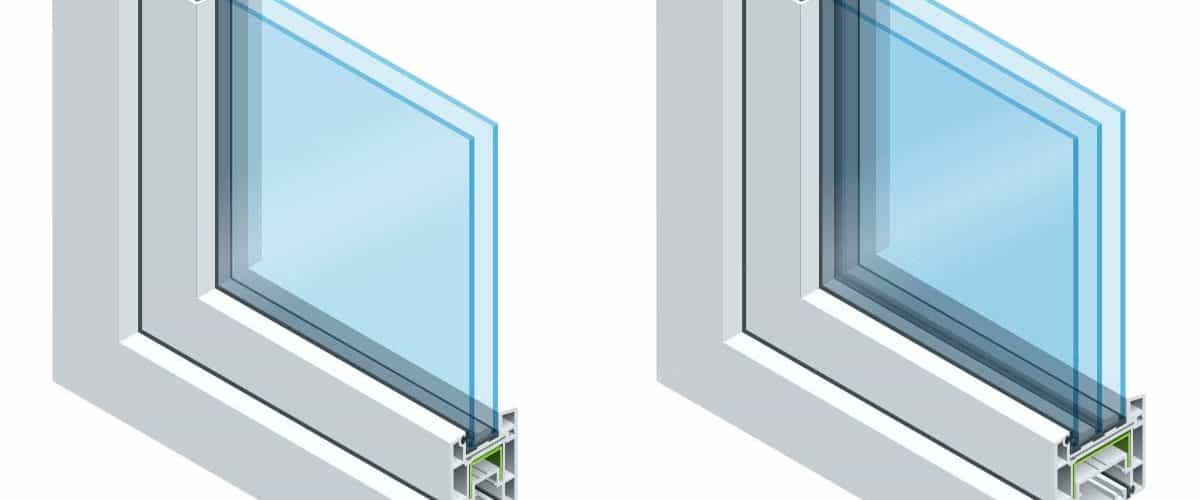For many years, it was a common practice to apply storm windows over the face of residential windows every Autumn and remove them in the Spring when the warm weather arrived. This provided an effective, though inefficient, means of lessening the heat loss through the single-pane window glass. Sometime in the mid-1960’s it was discovered that a sandwich could be made of two panes of glass, a separator and a sealant, that would proved even greater efficiency over the storm window application. While the window industry called this product “insulated glass,” the general public came to know it as “double-glazing” or “double-pane” windows.
The principal behind the theory of insulated glass is to provide a “dead-air-space” between the two panes of glass, thus minimizing the transference of heat by convection. It was learned that the greater the space between the two lites of glass, the greater was the insulating value of the glass sandwich. About the same time as the development of insulating glass came concerns about heat transference through the window frames and around the operating sashes. Thermally-broken aluminum, wood and non-conductive polyvinylchloride (PVC) took care of most of the conduction of heat through window frames and wool-pile weather-stripping with a Mylar fin eliminated most of the air passage around the operating portion of the window, the sashes or ventilators.
Testing by window and insulating glass manufacturers further disclosed that the efficiency of the windows could be made even more energy conserving by “triple-glazing” the frames, creating even more dead-air-space. The triple glazing was initially accomplished by applying an additional, lightweight window to either the exterior or interior of the insulated glass prime window, much in the same way as the old-time storm windows were applied. This was very effective, but the windows then had two operating sashes for each opening. Testing was done on making the insulating glass sandwich with three pieces of glass (lites in window industry-speak, panes to the general public), two separators and the sealant. This triple glazing, or triple pane windows proved to be markedly more effective than the insulating glass unit with two pieces of glass.
The advent of triple glazing required a redesign of many window and sash frames so they would accommodate the increased glass thickness. This was far easier in frame materials like aluminum and PVC and not as easy in wood. PVC, though it has less structural integrity than aluminum, became the frame material of choice for most residential new construction and replacement, mainly because it required less technology to fabricate the frames.
A triple glazed insulating glass unit was attempted by using a piece of transparent Mylar film instead of glass, as the middle part of the sandwich. It was effective as an insulator, but not cost effective to manufacture, requiring much more labor than when using glass. Another innovation is the advent of “heat-mirror” technology in which a microscopic, transparent, metallic coating is applied to one of the glass surfaces so that it will reflect heat, either to the interior or exterior of the building. Which surface received this special coating was determined by the geographical need; reflecting heat inward in colder climates, or reflecting outward to preserve air-conditioned space integrity.
The window and glass industry will continue to experiment and test products to improve the energy saving of their product, but at present, the most effective window unit, from both a cost and energy efficiency standpoint, is a triple-glazed PVC or thermally-broken aluminum framed product. These units will actually pay for themselves through energy savings, the timeline to that self-payment being determined by the latitude and severity of the winter weather. A homeowner could expect a return on investment to occur in as quickly as three years or up to ten years.
An additional benefit to triple pane insulating glass is the reduction in noise pollution. It is estimated that noise is reduced by sixty percent or more, so the house is much quieter and outside noise less intrusive.
Related Posts
<>



